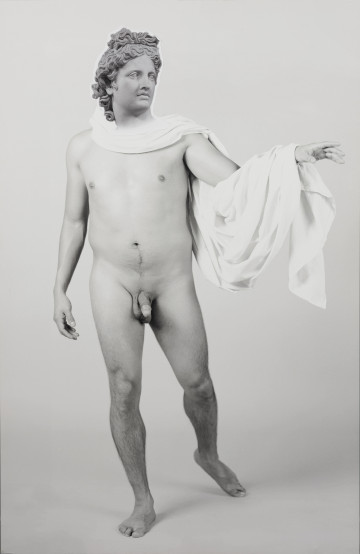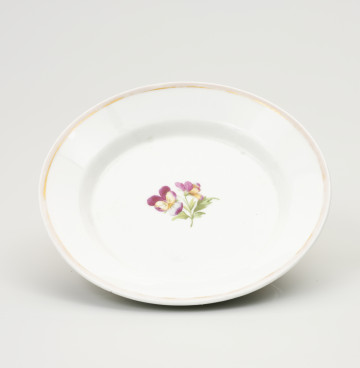
Apollo
2004
National Museum in Szczecin
Part of the collection: Craft and industry products of Szczecin
The wares of the famous Meissen porcelain were extremely popular with the wealthy as they were superfluous items that served only decorative and not utilitarian purposes. Their possession was a sign of wealth and sublime taste. Works by Johann Joachim Kändler (1706-1775), a master sculptor and porcelain decorator, were especially highly prized. He was the son of a pastor and was born in Fischbach, Germany, where he received a classical education. As a young man with an excellent knowledge of Greco-Roman mythology, a gift for observing nature and above all a high level of sculptural skill and ingenuity, he was apprenticed as a sculptor at the Dresden court. His talent was soon recognised by August II the Strong himself (1670-1733), which resulted in him being hired in 1731 as a modeller, sculptor, designer, decorator and finally head of the sculpture department at the Meissen porcelain manufactory. Kändler treated porcelain as a sculptural material and decorated its surface with paintings. He became the most outstanding artist and visionary in this field of craftsmanship. The objects he produced often acquired the status of porcelain masterpieces, characterised by great detail, free rococo charm, but also realism. He left behind thousands of works which can be admired in the most famous museums in the world. In the 19th century the royal manufactory was modernised by introducing industrial methods into the production process. In 1910, on the occasion of its bicentenary, many figurines were cast according to Kändler's 18th century models. Crossed swords - part of the coat of arms of the Electors of Saxony - were its trademark almost from the beginning.
Małgorzata Peszko
Author / creator
Dimensions
cały obiekt: height: 65 cm
Object type
pitcher, jug
Creation time / dating
Creation / finding place
Identification number
Location / status

2004
National Museum in Szczecin

1913 — 1930
National Museum in Szczecin

1923 — 1945
National Museum in Szczecin
DISCOVER this TOPIC
National Museum in Szczecin
DISCOVER this PATH
Educational path